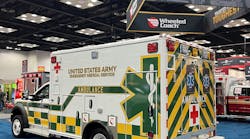The following are quotes from Fire Chief Anthony Aiellos (ret) Hackensack (NJ) Fire Department, Fire Chief during the Hackensack Ford Fire, July, 1988...
"If you don't fully understand how a building truly performs or reacts under fire conditions and the variables that can influence its stability and degradation, movement of fire and products of combustion and the resource requirements for fire suppression in terms of staffing, apparatus and required fire flows, then you will be functioning and operating in a reactionary manner.
"This places higher risk to your personnel and lessens the likelihood for effective, efficient and safe operations. You're just not doing your job effectively and you're at RISK. These risks can equate into insurmountable operational challenges and could lead to adverse incident outcomes. Someone could get hurt, someone could die, it's that simple, it's that obvious.
"Risk Based Response Assignments
The buildings, structures and occupancies that comprise typical response districts pose unique and consistent challenges during structural fire attack. The variety of occupancies and building characteristics establish varying degrees of risk potential, with defined and recognizable strategic and tactical measures to be taken-sometimes uniquely to each occupancy type. Although each occupancy type presents variables that dictate how a particular incident is handled, most company operations evolve from basic principles rooted in past performance and operations at similar structures. This is based on what I define as; "predictability of performance."
When we look at various buildings and occupancies, past operational experiences; those that were successful, and those that were not, give us experiences that define and determine how we access, react and expect similar structures and occupancies to perform at a given alarm in the future. Naturalistic (or recognition-primed) decision-making forms much of this basis. We predicate certain expectations that fire will travel in a defined (predictable) manner that fire will hold within a room and compartment for a given duration of time, that the fire load and related fire flows required will be appropriate for an expected size and severity of fire encountered within a given building, occupancy, structural system.
We used to know with a measured degree of predictability, how our buildings would perform, react and fail under most fire conditions. This is what our years of fireground experience provided us, and how we ultimately would predict, assess, plan and implement our incident action plans and ultimately deploy our companies-based upon the predictable performance expected. Conventional Construction Structures (CCS) had this "predictably of performance." You know, that typical residential structure, the 2-1/2 story wood frame, the three story brick and joist type III occupancy, the four story frame multiple occupancy, etc., etc.
Unlike Engineered System Structures (ESS) whose predictability is rooted in the fact that they are unpredictable. The emerging fire service issues affecting buildings, occupancies and structural systems related to ESS is only beginning to take hold a prominent role and level of significance that is long overdue. The fire service has been dealing with the operational issues and line-of-duty deaths related to ESS since the 1980s and now in 2009, we're finally raising these ESS issues to a dialog point that is influencing firefighter safety, survival and operations. ( Refer to the Underwriters Laboratory's (UL) UL University on-line training module for a state-of-the art presentation on Structural Stability of Engineered Lumber in Fire Conditions and performance results that correlate towards redefining fire suppression operations)
The fire service is beginning to fully recognize the merits in adjusting, altering, and changing our strategic and tactical ways of doing business in the streets. It's becoming self evident in the fire service that it's no longer acceptable to think that ESS buildings and occupancies will perform in the same manner as CCS buildings and occupancies and that tactics deployed in both CCS and ESS buildings and occupancies will react under similar strategic and tactical plans and tasks. These unique and inherent factors within the ESS profiles must give us a new standard for operational deployment; strategies and tactics that are defined by the risk profile of the building, its engineered structural systems, materials and methods of construction and the fire loading present.
Considerations for changing fire flow rates, the sizing of hose line and the adequacies for fire flow demand and application rates, staffing needs for safe operations, considerations for defensive positioning and defensive operating postures must be considered, and it warrants repeating again; Reckless-Aggressive firefighting must be redefined in the built environment and associated with goal oriented tactical operations that are defined by risk assessed and analyzed tasks that are executed under battle plans that promote the best in safety practices and survivability within known hostile structural fire environments- with determined, effective and proactive firefighting.






